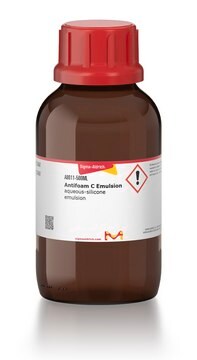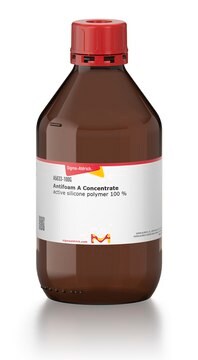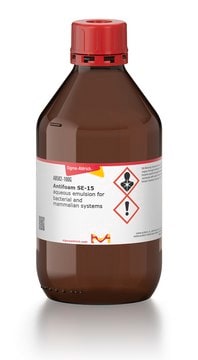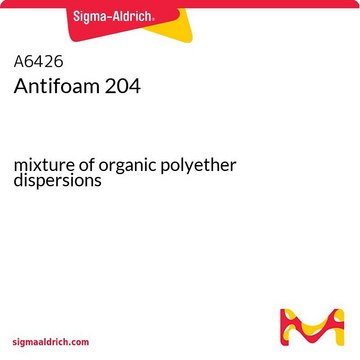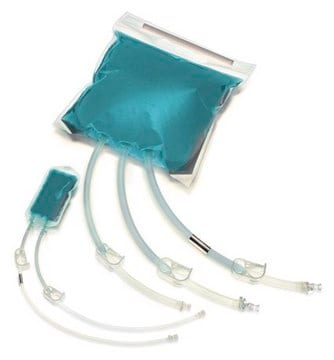A6582
Antifoam A concentrate
active silicone polymer 100%
Synonym(s):
Antifoam agent, Antifoam solution, Foam control agent
About This Item
Recommended Products
Quality Level
form
emulsion (aqueous)
technique(s)
cell culture | hybridoma: suitable
microbiological culture: suitable
density
0.97 g/mL at 25 °C
application(s)
microbiology
storage temp.
room temp
suitability
(Mammalian (suspension))
bacteria (fermentation)
General description
Application
- in bioreactor culture for Staphylococcal enterotoxin C (SEC) production.
- to prevent foam formation during the aerobic treatment of sludge.
- to study the impact of surface tension on bioaerosol generation during bubbling.
Features and Benefits
- Molecular biology grade and tested for use in bacterial fermentation.
- Extremely effective foam suppressor for aqueous and non-aqueous systems.
- Made of 100% active silicone polymer, free of emulsifiers.
- Typically, effective at 1-100 ppm.
- Product will be stable in the pH range of 5 to 9.
- Can be directly added to a fermentation medium but it is not recommended that it be pumped to a fermenter on an as-needed basis.
Components
Preparation Note
related product
Signal Word
Warning
Hazard Statements
Precautionary Statements
Hazard Classifications
Aquatic Acute 1 - Aquatic Chronic 1
Storage Class Code
10 - Combustible liquids
WGK
WGK 3
Flash Point(F)
>213.8 °F - closed cup
Flash Point(C)
> 101 °C - closed cup
Personal Protective Equipment
Certificates of Analysis (COA)
Search for Certificates of Analysis (COA) by entering the products Lot/Batch Number. Lot and Batch Numbers can be found on a product’s label following the words ‘Lot’ or ‘Batch’.
Already Own This Product?
Find documentation for the products that you have recently purchased in the Document Library.
Our team of scientists has experience in all areas of research including Life Science, Material Science, Chemical Synthesis, Chromatography, Analytical and many others.
Contact Technical Service